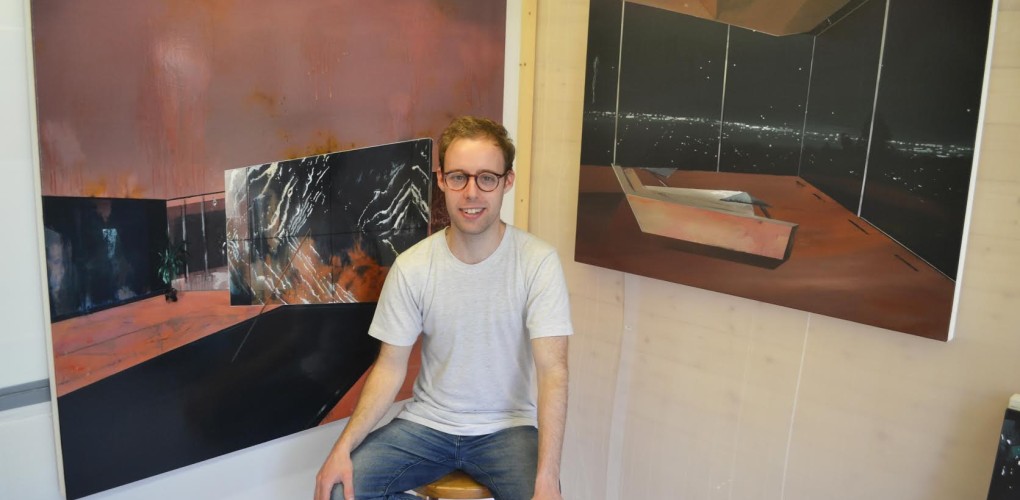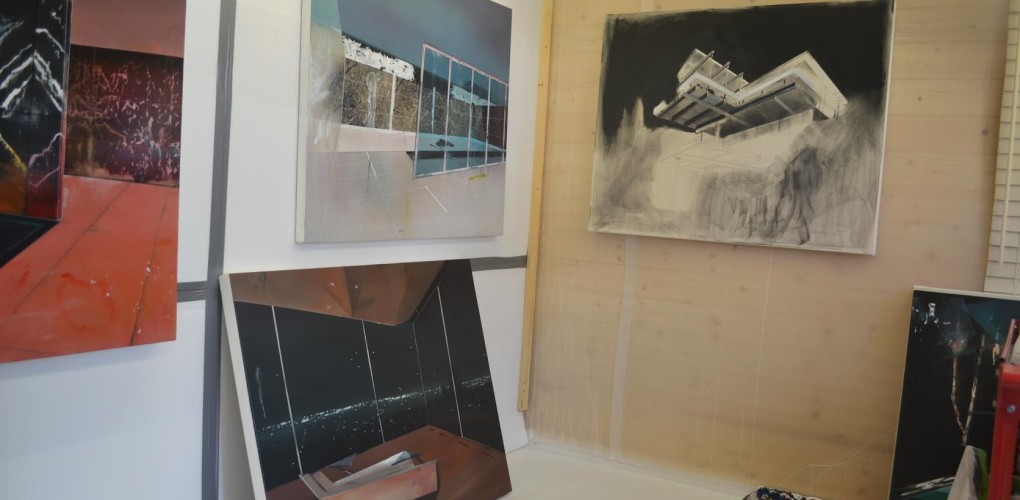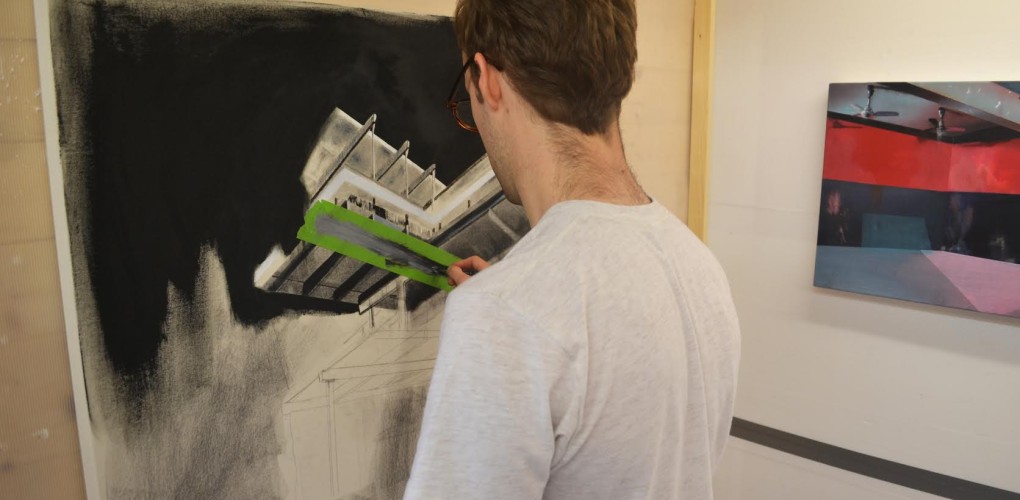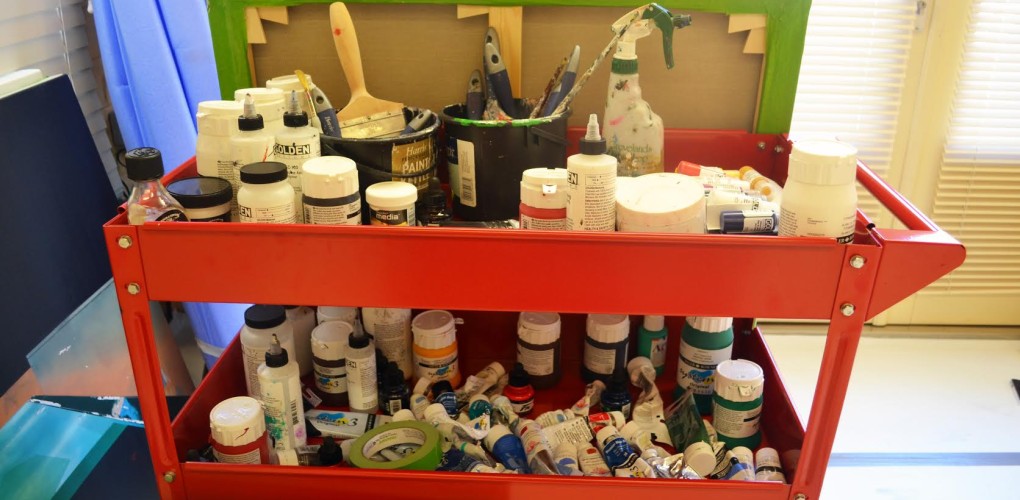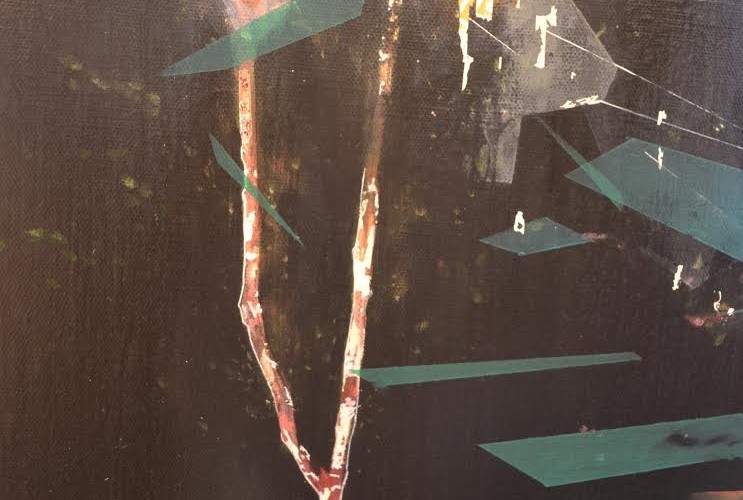One to Watch
 Laurence Jones
Laurence Jones
Laurence Jones is an emerging artist currently based in Reading, UK. He received his BFA in 2013 from Kingston University, London. He has exhibited extensively in London, including at Meanwhile Space, The Cavendish Gallery, and Vyner Street Gallery.
Laurence creates hyperrealistic paintings that predominantly feature striking architecture and interior scenes at nighttime. Each painting incorporate elements of both fiction and reality. He draws from a pool of collected images that are then digitally edited, and serve as the starting point for his process-based practice. Some elements are scanned in and collaged directly from film sets, which in turn enforces the overall aesthetic of the fabricated image, as he borrows from the tropes of staged photographic history.
Laurence’s paintings offer a simulation of reality through the lens of a screen-like finish apparent in each work. He experiments with perspectival plans, either flattening or extending them and warping the notion of depth. He presents a simultaneous distancing and magnification, which lends multiple readings for each painting.
What are the major themes you pursue in your work?
The theme I most often revisit is the idea of an incomplete narrative, where something has happened or is about to happen, an ‘in-between’ moment. The idea of a constructed environment is something I find fascinating, because it plays into so many of the channels we use everyday; the internet, social media, Youtube videos, films, all of which require some degree of construction. My dad works as a film and TV set maker, so I used to visit film sets when I was younger. It’s only now that I’m starting to see the parallels between those early influences and my current practice.
I generally start a work by looking at as many images as I can, and start with a wash of different colours. As I settle on a few images that I find interesting, I put things together in Photoshop. I build the work up in layers, erasing and scratching into the surface, layering in bits of collaged imagery, all of which help enforce the idea that the scene is a fabrication. The interplay between technology and painting is a big part of the process for me, and It’s something I hope comes through in the finished work. Having said that, drawing is hugely important to the outcome as well, so it’s about striking some sort of balance.
What was the best advice given to you as an artist?
Not to overwork a painting, and to loosen up with my marks; this is something that still needs some work.
Prefer to work with music or in silence?
Always with music. You’d be hard pressed to find me without music on anyway, but in the studio, forget about it! Generally something loud and fast works well, but I listen to a wide range of music, so that can change on any given day. I’ve played instruments since I was young, and it has definitely shaped my interests as an artist.
If you could only have one piece of art in your life, what would it be?
If I could only have one piece of art, it would probably be something by Velazquez. I saw his work last year in Madrid, and his handling of paint was near perfect. So I guess a piece by him would be enough to last… If that could not be arranged, I’d like something by Dirk Skreber.
Who are your favorite writers?
Jack Kerouac, Charles Bukowski, George Orwell, and Jean Baudrillard. In terms of influences on my practice, a lot of magazines from fashion to skateboarding are a great source of visual inspiration. I hope the inherently human, yet dystopian themes of the above writers collide with the throwaway nature of some of my other influences when I’m making a work.
